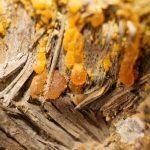Liquid herbal incense, often marketed as a legal alternative to traditional incense, has gained popularity in recent years. However, it’s essential to approach this product with caution and awareness.
What is Liquid Herbal Incense?
Liquid herbal incense is a concentrated blend of plant extracts and synthetic chemicals. It’s typically sold in small bottles and is intended to be vaporized using specialized devices. The resulting vapor is inhaled, producing various effects.
The Allure of Liquid Herbal Incense
- Legal Ambiguity: One of the primary reasons for its popularity is its legal status. In many jurisdictions, liquid herbal incense isn’t explicitly illegal. However, the legality of these products can be complex and subject to change.
- Diverse Effects: Depending on the specific blend, liquid herbal incense can induce relaxation, euphoria, or altered states of consciousness.
- Affordability: Compared to traditional incense or other recreational substances, liquid herbal incense is often more affordable.

The Risks Associated with Liquid Herbal Incense
While liquid herbal incense may seem harmless, it carries significant risks:
- Unpredictable Effects: The effects of liquid herbal incense can vary widely, even within the same product. This unpredictability can lead to adverse reactions and unintended consequences.
- Potential for Addiction: Some users may develop a dependence on liquid herbal incense, leading to compulsive use and withdrawal symptoms.
- Health Risks: Inhaling the vaporized chemicals can damage the lungs and respiratory system. Long-term use may also lead to cognitive impairment and other health problems.
- Legal Consequences: Despite its legal ambiguity, using liquid herbal incense in certain situations or locations can still result in legal trouble.
The Science Behind Liquid Herbal Incense
Liquid herbal incense often contains synthetic cannabinoids, which are man-made chemicals designed to mimic the effects of THC, the primary psychoactive compound in marijuana. However, synthetic cannabinoids can be far more potent and unpredictable than natural cannabinoids.
The Regulatory Landscape of Liquid Herbal Incense
Governments worldwide have struggled to regulate liquid herbal incense due to its rapidly evolving nature. As new synthetic cannabinoids emerge, lawmakers often find themselves playing catch-up.
- Bans and Restrictions: Many countries and states have implemented bans or restrictions on liquid herbal incense, particularly those containing specific synthetic cannabinoids.
- International Cooperation: International cooperation is crucial to combat the global trade in synthetic drugs, including liquid herbal incense.

The Future of Liquid Herbal Incense
The future of liquid herbal incense is uncertain. As regulations tighten and public awareness grows, it’s likely that the market for these products will shrink. However, the allure of easy access and diverse effects may continue to draw some users.
Aromatherapy benefits and potential therapeutic effects
While liquid herbal incense can be used for aromatherapy, it’s important to approach this practice with caution and awareness of potential risks.
Aromatherapy and Herbal Incense
Aromatherapy, the therapeutic use of essential oils, has been practiced for centuries. When used correctly, it can offer a range of potential benefits, including:
- Stress Reduction: Certain scents, like lavender and chamomile, are known to have calming effects.
- Improved Mood: Citrus scents, such as lemon and orange, can uplift mood and reduce feelings of anxiety.
- Better Sleep: Lavender and chamomile can promote relaxation and improve sleep quality.
- Pain Relief: Some essential oils, like peppermint and eucalyptus, may help alleviate pain.
However, it’s crucial to distinguish between traditional aromatherapy and the use of liquid herbal incense.
The Risks of Liquid Herbal Incense
While liquid herbal incense often contains plant-based ingredients, it may also include synthetic cannabinoids and other harmful chemicals. These substances can have serious health consequences, including:
- Respiratory Problems: Inhaling the vapor can irritate the lungs and lead to respiratory issues.
- Cardiovascular Problems: Some substances in liquid herbal incense may increase heart rate and blood pressure.
- Neurological Effects: Prolonged use can lead to cognitive impairment and other neurological problems.
- Addiction: Certain synthetic cannabinoids can be highly addictive.
- Legal Issues: The possession and use of liquid herbal incense can be illegal in many jurisdictions.
Safe Aromatherapy Practices
If you’re interested in using aromatherapy, it’s recommended to use pure essential oils diluted in a carrier oil. Always consult with a healthcare professional before using essential oils, especially if you have underlying health conditions or are pregnant.
Key Considerations:
- Source of Essential Oils: Ensure that you purchase essential oils from reputable sources.
- Dilution: Always dilute essential oils before applying them to the skin.
- Patch Test: Perform a patch test to check for allergic reactions.
- Avoid Ingestion: Never ingest essential oils.
- Storage: Store essential oils in cool, dark places.
In conclusion, while aromatherapy can offer potential health benefits, it’s essential to use it responsibly and avoid products that may contain harmful substances. If you’re considering using liquid herbal incense, it’s crucial to weigh the potential risks and benefits carefully.
Additional Considerations
- Responsible Use: If you choose to use liquid herbal incense, it’s essential to do so responsibly. Start with a low dose and gradually increase it as needed.
- Seek Professional Help: If you or someone you know is struggling with addiction to liquid herbal incense or other substances, seek professional help.
- Stay Informed: Stay informed about the latest regulations and health risks associated with liquid herbal incense.
By understanding the risks and making informed decisions, you can protect yourself and others from the dangers of liquid herbal incense.

Legal regulations and restrictions on the use and sale of liquid herbal incense
The legal landscape surrounding liquid herbal incense is complex and ever-evolving. Many countries and jurisdictions have enacted laws to regulate or ban these substances due to their potential for abuse and harmful effects.
Key Legal Issues
- Synthetic Cannabinoids: Many liquid herbal incense products contain synthetic cannabinoids, which are man-made chemicals designed to mimic the effects of THC, the primary psychoactive compound in marijuana. These substances are often unregulated and can have unpredictable and dangerous effects
- Labeling and Marketing: Many liquid herbal incense products are labeled as “not for human consumption” to circumvent legal restrictions. However, this labeling does not deter individuals from using them for their intended purpose.
- Public Health Concerns: The potential health risks associated with liquid herbal incense, including addiction, respiratory problems, and mental health issues, have prompted regulatory action.
International Regulations
While specific regulations vary by country, many nations have taken steps to address the issue of liquid herbal incense:
- United States: The United States has implemented various federal and state laws to ban specific synthetic cannabinoids. However, the rapid emergence of new substances often outpaces legislative efforts.
- European Union: The EU has classified many synthetic cannabinoids as controlled substances, making their production, sale, and possession illegal.
- United Kingdom: The UK has enacted specific legislation to ban the sale and supply of synthetic cannabinoids.
- Australia: Australia has strict laws against the possession and use of illicit drugs, including synthetic cannabinoids.
Challenges in Regulation
- Rapid Evolution of Substances: The rapid pace of innovation in synthetic drug chemistry makes it difficult for lawmakers to keep up with emerging substances.
- International Trade: The global nature of the drug trade, including liquid herbal incense, poses challenges for law enforcement and regulatory agencies.
- Legal Ambiguities: The ambiguous labeling and marketing of these products can complicate legal enforcement.
The legal status of liquid herbal incense is subject to constant change. As regulatory bodies worldwide continue to grapple with the challenges posed by synthetic drugs, it’s essential to stay informed about the latest laws and regulations. Individuals considering using liquid herbal incense should be aware of the potential legal and health risks associated with these substances.
Liquid herbal incense is a complex and often dangerous product. While it may offer a temporary escape or altered state of consciousness, the potential risks far outweigh the benefits. It’s crucial to approach this substance with caution and to be aware of the potential consequences.










